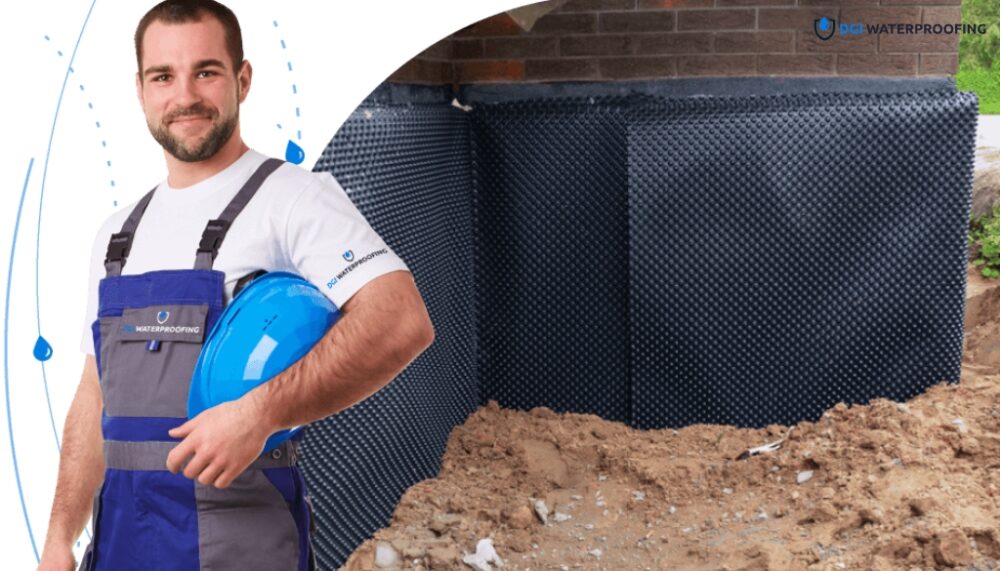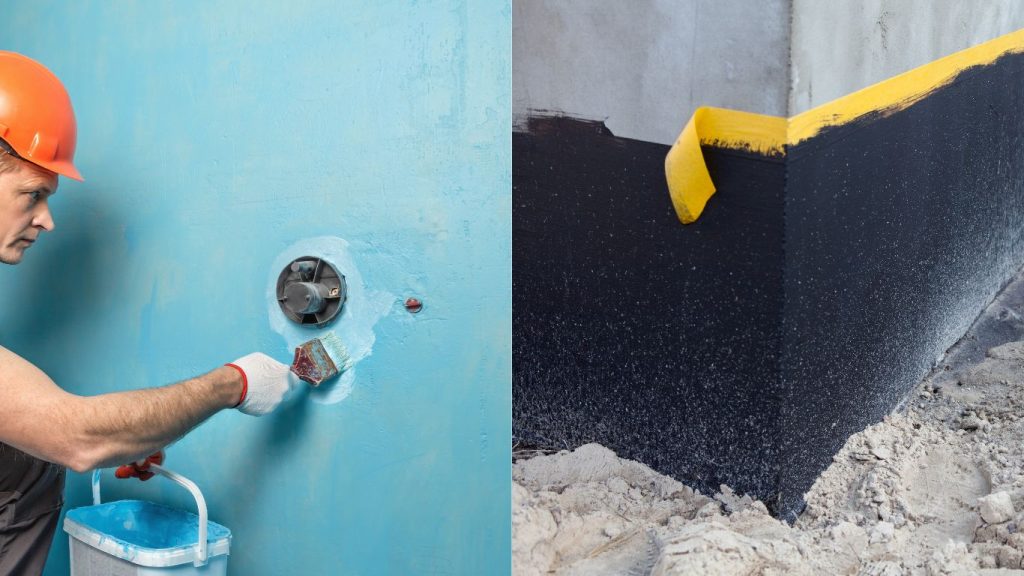Waterproofing your home is an essential step in maintaining its structural integrity and safeguarding your financial investment. When it comes to waterproofing, homeowners often face a crucial decision: exterior or interior. Each method offers distinct advantages, and choosing the right one depends on your specific needs and the characteristics of your home. In this guide, we’ll explore the differences between exterior and interior waterproofing to help you make an informed decision.
Exterior Waterproofing
1. Protection at the Source: Outdoor waterproofing establishes a shield between your foundation and the elements. Applying waterproof sheaths or coatings on exterior walls stops water from reaching your foundation, addressing water intrusion at its origin and providing thorough protection against groundwater and rainwater.
2. Long-lasting Solution: Exterior waterproofing solutions provide durable, long-lasting protection. Once properly applied, they require minimal maintenance and can withstand various weather conditions. This method offers peace of mind, knowing that your foundation is shielded against water damage for years to come.
3. Preserve Structural Integrity: By preventing water from penetrating the foundation, exterior waterproofing preserves the structural integrity of your home. It reduces the risk of cracks, erosion, and other foundation-related issues, ensuring the longevity of your property.
4. Cost-Effective in the Long Run: While exterior waterproofing may have a higher initial cost, it proves to be cost-effective with time. Its effectiveness and durability mean you’re less likely to encounter expensive repairs due to water damage in the future.

Interior Waterproofing
1. Addressing Existing Issues: Interior waterproofing methods focus on managing water that has already penetrated your home. Solutions such as interior drainage systems, sump pumps, and sealants are installed inside your basement to channel water away and keep the interior dry. This approach is effective for managing existing water-related problems.
2. Suitable for Limited Budgets: Interior waterproofing methods are generally more budget-friendly for the short term. If your budget is limited, addressing interior water issues promptly can prevent further damage while providing immediate relief from existing water infiltration problems.
3. Easier to Access: Since interior waterproofing solutions are applied inside your home, they are easier to access and install. This makes them a practical choice for homes with limited exterior space or properties where extensive excavation is not feasible.
4. Requires Ongoing Maintenance: Unlike exterior waterproofing, interior solutions may require regular maintenance and monitoring. Sump pumps need periodic checks, and interior sealants might need reapplication over time. Homeowners should be proactive in maintaining these systems to ensure their effectiveness.
Choosing the Right Method:
- Consider the Severity of the Problem: If you’re dealing with existing water issues, interior waterproofing can provide immediate relief. However, for long-term prevention, especially in areas prone to heavy rainfall or high water tables, exterior waterproofing is the superior choice.
- Evaluate Your Budget: While exterior waterproofing offers long-lasting protection, if your budget is limited, addressing interior issues promptly is crucial to prevent further damage. You can plan for exterior waterproofing in the future when finances allow.
- Consult with Professionals: It’s essential to consult with waterproofing professionals to assess your specific situation. Experienced professionals can evaluate your property, recommend the most suitable method, and provide a customized solution tailored to your needs and budget.
In summary, both exterior and interior waterproofing methods have their merits, and the right choice depends on your circumstances. Whether you prioritize long-term prevention or need to address existing issues promptly, investing in the appropriate waterproofing method ensures your home remains dry, secure, and resilient against water damage. Get a Quote for waterproofing your home here!
